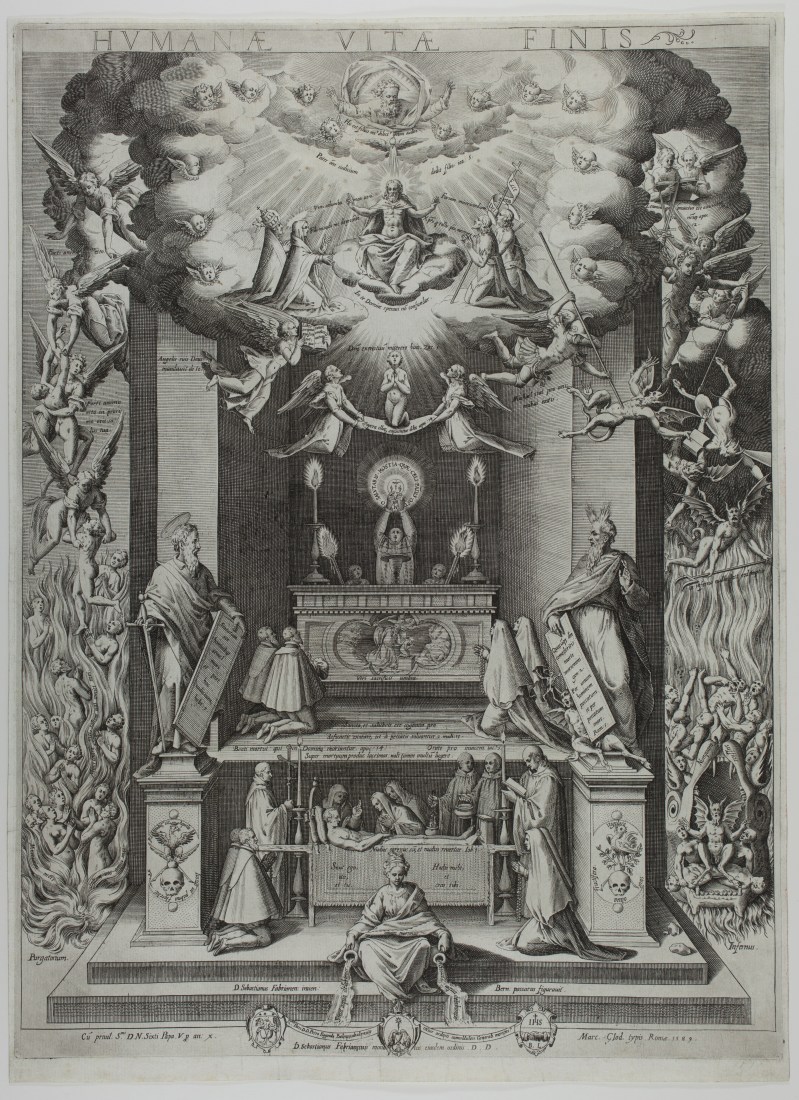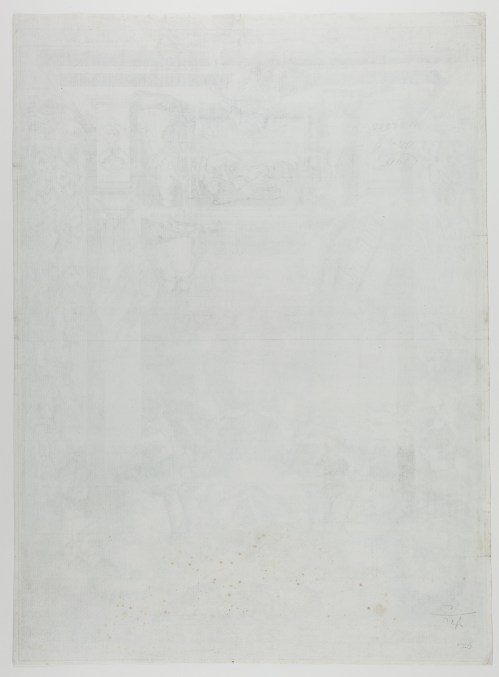Bernardino PASSERI (attributed to): Humanae Vitae Finis - 1589
Price: 4500 €
Engraving, 522 x 383 mm. Bartsch undescribed.
Impression with the address of Marcello Clodio (active c. 1587/1589). On an impression in the Metropolitan Museum of Art, Clodio's address has been erased and replaced by that of Tommaso Moneta (active in Rome c. 1588-1603). Our impression is therefore from the first state of the print.
Very rare.
Very fine impression on laid paper with a watermark close to Woodward 319, found on a map dating from c. 1590: letter M under a star within a C-type coat of arms.
Few small light foxmarks around Christ; very small repaired marginal tear, otherwise in very good condition. Thread margins all around the platemark.
Bartsch writes at the beginning of the catalog of Bernardino Passari's works, in volume 17 of Le Peintre graveur : "We can assure our readers that the seventy-eight pieces detailed in our catalog all belong to Bernardin Passari alone; but we will not maintain that there are no other pieces similarly made by him which may have escaped us." (translated by us)
Humanae Vitae Finis bears two authors' names, that of Sebastianus Fabrianensis (D. Sebastianus Fabrianen: inven:) and that of Bernardino Passeri (Bern: passarus figuravit).
According to the Abbot Pietro Zani, Sebastiano and Passeri are both inventors of the engraving, the first having provided the second with the theme and the entire conduct of the subject (Enciclopedia Metodica critico-ragionata delle belle arti, p. 39).
It is difficult to say whether Bernardino Passeri engraved his composition himself. The Metropolitan Museum of Art attributes his print to him.
The Rijksmuseum has another print published by Marcello Clodio, which is similar to Humanae Vitae Finis in size and title, also engraved in capital letters on its upper edge: Speculum Humanae Vitae.




